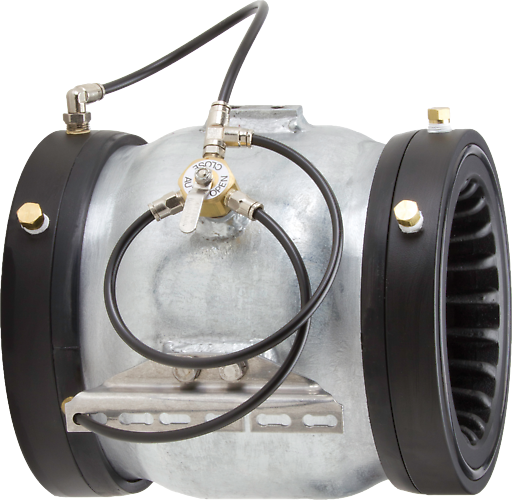
Maximize Power Financial Savings and Convenience With Advanced Structure Automation Controls
In the world of modern architecture and facility management, the integration of sophisticated structure automation regulates stands as a critical development. By using the power of automation, structures can adjust, respond, and advance in methods that were once unimaginable.
Energy Effectiveness Perks
Energy performance benefits can dramatically decrease power usage and operational prices in buildings. By carrying out energy-efficient practices and modern technologies, building proprietors and drivers can attain significant financial savings while also contributing to ecological sustainability. Among the main benefits of enhancing power effectiveness in buildings is the reduction of utility bills. Energy-efficient systems, such as sophisticated building automation controls, can maximize using sources like lighting, cooling, and heating, leading to reduced energy expenditures in time.
In addition, improved energy effectiveness can prolong the life-span of building devices and systems. By operating much more effectively, a/c systems, light, and other building components experience less wear and tear, causing minimized maintenance and replacement prices. Furthermore, energy-efficient structures frequently regulate greater home worths and rental rates, offering long-lasting monetary advantages to proprietors.
In addition, power effectiveness can improve resident convenience and performance. Effectively managed indoor environments with ideal lighting and thermal problems create a more favorable and positive workspace, bring about enhanced staff member complete satisfaction and performance. Generally, the energy effectiveness benefits associated with sophisticated structure automation controls are complex, including expense financial savings, environmental stewardship, and occupant health.
Boosted Convenience Control
Enhancing convenience control in building atmospheres needs a sophisticated integration of sophisticated automation systems for optimum passenger well-being. By using innovative structure automation controls, centers can customize the interior setting to satisfy the details demands and preferences of passengers. control valves.
By integrating these sophisticated controls, structures can not only enhance comfort yet also improve energy performance by optimizing system procedures based on real occupancy and usage patterns. Inevitably, prioritizing occupant convenience via sophisticated automation systems leads to a much more enjoyable and much healthier indoor environment.
Operational Efficiency Improvements

Moreover, the implementation of real-time tracking and analytics tools allows structure drivers to identify energy inefficiencies and operational anomalies quickly. By continuously checking energy usage patterns and system efficiency metrics, modifications can be made in real-time to enhance power usage and ensure peak operational effectiveness. control valves. In addition, including need reaction approaches into structure automation controls can even more boost functional performance by why not try here dynamically adjusting power usage based on grid problems and pricing signals
Indoor Climate Optimization
Reliable indoor climate optimization is a fundamental aspect of building automation controls, making sure residents' comfort and health while taking full advantage of power financial savings. By utilizing innovative sensing units and controls, constructing automation systems can constantly adjust and monitor temperature level, moisture degrees, air quality, and air flow to produce an optimal indoor setting. Preserving comfortable and constant conditions not just improves occupant satisfaction but additionally enhances performance and total well-being.
Interior environment optimization likewise plays an important function in energy effectiveness. By fine-tuning ventilation, air conditioning, and home heating systems based upon real-time data and occupancy patterns, developing automation controls can significantly decrease energy usage - control valves. For example, implementing techniques such as demand-controlled air flow and thermal zoning can assist lessen power waste while making sure that each location of the building gets the required conditioning.

Lasting Atmosphere Development
Structure automation controls not just maximize interior environment conditions for power efficiency and occupant convenience however also lay the foundation for producing a lasting setting with strategic administration of sources and systems. By integrating sophisticated building automation innovations, such as sensors, actuators, and smart software, centers can keep an eye on and readjust power use in real-time to lessen waste and decrease their carbon footprint. These systems allow anticipating upkeep, determining potential concerns prior to they intensify and maximizing tools performance to improve long life and effectiveness.
Furthermore, lasting atmosphere production prolongs beyond energy management to include water preservation, waste reduction, and indoor air high quality renovation. Structure automation controls can manage water use, find leakages, my site and ensure correct waste disposal visit the site techniques, adding to overall sustainability efforts. Additionally, by managing and checking air flow and filtering systems, these technologies boost resident health and performance while lowering energy intake associated with cooling and heating operations.
Conclusion
In conclusion, advanced structure automation controls offer considerable benefits in regards to power financial savings, comfort control, functional efficiency, indoor climate optimization, and producing a sustainable environment. By applying these controls, buildings can accomplish ideal performance while minimizing energy usage and improving passenger comfort. It is evident that making use of advanced automation innovation is essential in boosting structure performance and developing a more sustainable future.
Energy effectiveness benefits can substantially lower energy consumption and operational expenses in structures. On the whole, the energy efficiency advantages linked with advanced building automation controls are multifaceted, incorporating price savings, environmental stewardship, and owner wellness.
Additionally, integrating need response methods into building automation controls can better enhance operational performance by dynamically changing energy usage based on grid conditions and prices signals.
Building automation regulates not only optimize interior climate conditions for power efficiency and owner convenience yet also lay the foundation for creating a sustainable environment via calculated administration of systems and sources.In final thought, advanced building automation regulates deal substantial advantages in terms of energy cost savings, comfort control, functional performance, indoor environment optimization, and producing a sustainable environment.